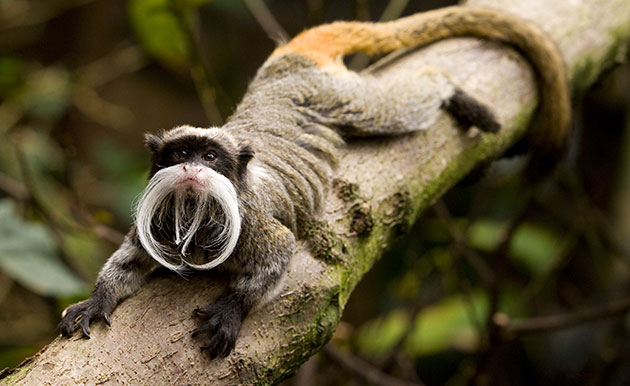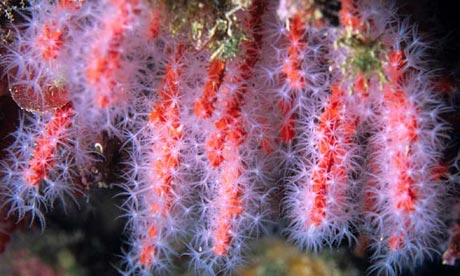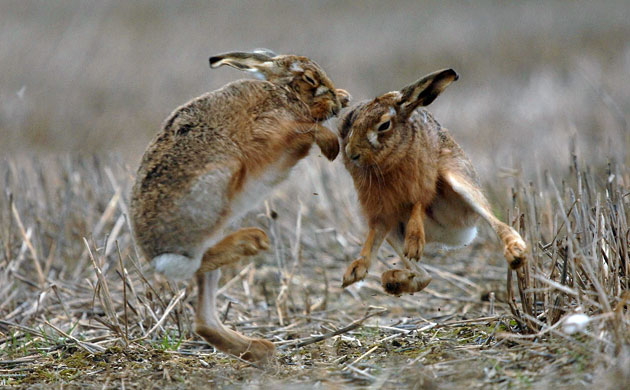TOP STORIES  Mysterious whale die-off is largest on record
Mysterious whale die-off is largest on record
Mass death among baby right whales has experts scrambling to figure out the puzzle behind the largest great whale die-off on record.
Observers have found 308 dead whales in the waters around Peninsula Valdes along Argentina's Patagonian Coast since 2005. Almost 90 percent of those deaths represent whale calves less than 3 months old, and the calf deaths make up almost a third of all right whale calf sightings in the last five years.
"This is the single largest die-off event in terms of numbers and in relation to population size and geographic range," said Marcela Uhart, a medical veterinarian with the Wildlife Conservation Society.
29 March 2010
J Hsu
Photo credit: New England Aquarium/AP
Location: Península Valdés, Chubut, Argentina - Map It

>>> FULL ARTICLE
>>> Dead dolphin washes ashore at Pensacola [includes video, Location: Pensacola Bay, Florida, USA - Map It
 ]
]>>> Dolphin found dead on beach at Pawleys [Location: Pawley's Island, South Carolina, USA - Map It
 ]
]>>> Ship Struck Whale Days Before One Washed Ashore [Fenwick Island, Delaware, USA]
 International task force concerned over declining support for H5N1 monitoring, despite disease persistence and spread
International task force concerned over declining support for H5N1 monitoring, despite disease persistence and spreadAn international team of experts has warned that while more is known today about the role of wild birds in the spread of the highly pathogenic H5N1 avian influenza virus than ever before, significant information gaps remain unfilled as government and public attention is shifting elsewhere.
"Waning attention to H5N1 HPAI is reducing surveillance and research opportunities, negatively affecting capacity building and coordination between environmental and agricultural authorities, and impacting efforts to further refine understanding of the epidemiology and the ecology of the virus," the Scientific Task Force on Avian Influenza and Wild Birds said in a statement following a review meeting held at FAO's Rome headquarters.
. . . "Unfortunately, H5N1 may have slipped off the radar screen for some people, but it continues to be a major problem, especially in Egypt and parts of Asia, where it is having a huge impact on food security and the livelihoods of farmers and local communities," said Juan Lubroth, FAO's Chief Veterinary Officer.
23 March 2010
Photo credit: JM Garg/Wikimedia Commons
>>> FULL ARTICLE
Related News
>>> Barn swallow suspected to have H5 virus [Location: Yuen Long, Hong Kong - Map It
 ]
] Elk Brucellosis Infection may be increasing in the Greater Yellowstone Ecosystem
Elk Brucellosis Infection may be increasing in the Greater Yellowstone EcosystemBrucellosis, a bacterial infection of cattle, elk and bison, appears to be increasing in several elk populations in northwestern Wyoming, according to a U.S. Geological Survey study recently released in the publication Ecological Applications.
. . . Biologists have known that brucellosis in parts of the ecosystem was sustained by abnormal densities and restricted winter distribution of elk that congregate on feeding grounds in Wyoming. Bison populations also independently maintain brucellosis irrespective of population size.
The new research shows that brucellosis may also be increasing in some elk populations that are distant from supplemental feeding grounds and bison.
New mathematical model helps biologists understand how coral dies in warming waters
Cornell University researchers have found a new tool to help marine biologists better grasp the processes under the sea: They have created mathematical models to unveil the bacterial community dynamics behind afflictions that bleach and kill coral.
Warming waters are triggering coral bleaching and disease in the Caribbean, Indian Ocean and Great Barrier Reef off the Australian coast. Now new mathematical models explain for the first time how beneficial bacteria on coral suddenly give way to pathogens when waters warm.
"Before this study, we just had observations but little understanding of the mechanism" for what causes coral disease and bleaching, said Laura Jones, Cornell senior research associate in ecology and evolutionary biology.
29 March 2010
>>> FULL ARTICLE
Journal Article Cited
How Microbial Community Composition Regulates Coral Disease Development. PLoS Biology. 8(3): e1000345.
More Ocean News
>>> Rising acid threatens oceans [cited journal article here]
OTHER WILDLIFE HEALTH RELATED NEWS
Photo credit: F Maffucci
- Badger TB vaccine granted official approval
- Whooping cranes will be tracked with GPS units to study their habits and hazards
- Hard-to-kill snails infest Santa Monica Mountain watersheds
- Folk medicine poses global threat to primate species
- The Secret of Turtle Island [sea turtles]
- Singapore a key transit hub for wildlife smuggling
- Yellowstone National Park Developing "Native Fish Conservation Plan"
Bat News
- Alabama bat colonies free of deadly fungal disease so far
- Bats retune echolocation and use sun's glow to navigate near and far [includes video, cited journal articles here and here]
Huh, That's Interesting!
WILDLIFE HEALTH RELATED PUBLICATIONS
Browse complete Digest publication library here.
 Australian dingoes are definitive hosts of Neospora caninum
Australian dingoes are definitive hosts of Neospora caninumInternational Journal for Parasitology. 2010 [Epub ahead of print]
JS King et al.
How Microbial Community Composition Regulates Coral Disease Development
PLoS Biol. 2010; 8(3): e1000345.[free full-text available]
J Mao-Jones et al.
Spatio-temporal overlap between Yellowstone bison and elk – implications of wolf restoration and other factors for brucellosis transmission risk
Journal of Applied Ecology. 2010; 47(2): 281-289
KM Proffitt et al.
Surveillance for West Nile virus in American white pelicans, Montana, USA, 2006-2007
Emerg Infect Dis. 2010 Mar;16(3):406-11. [free full-text available]
G Johnson et al.
Diseases of Aquatic Organisms
Volume 89, Number 2





















